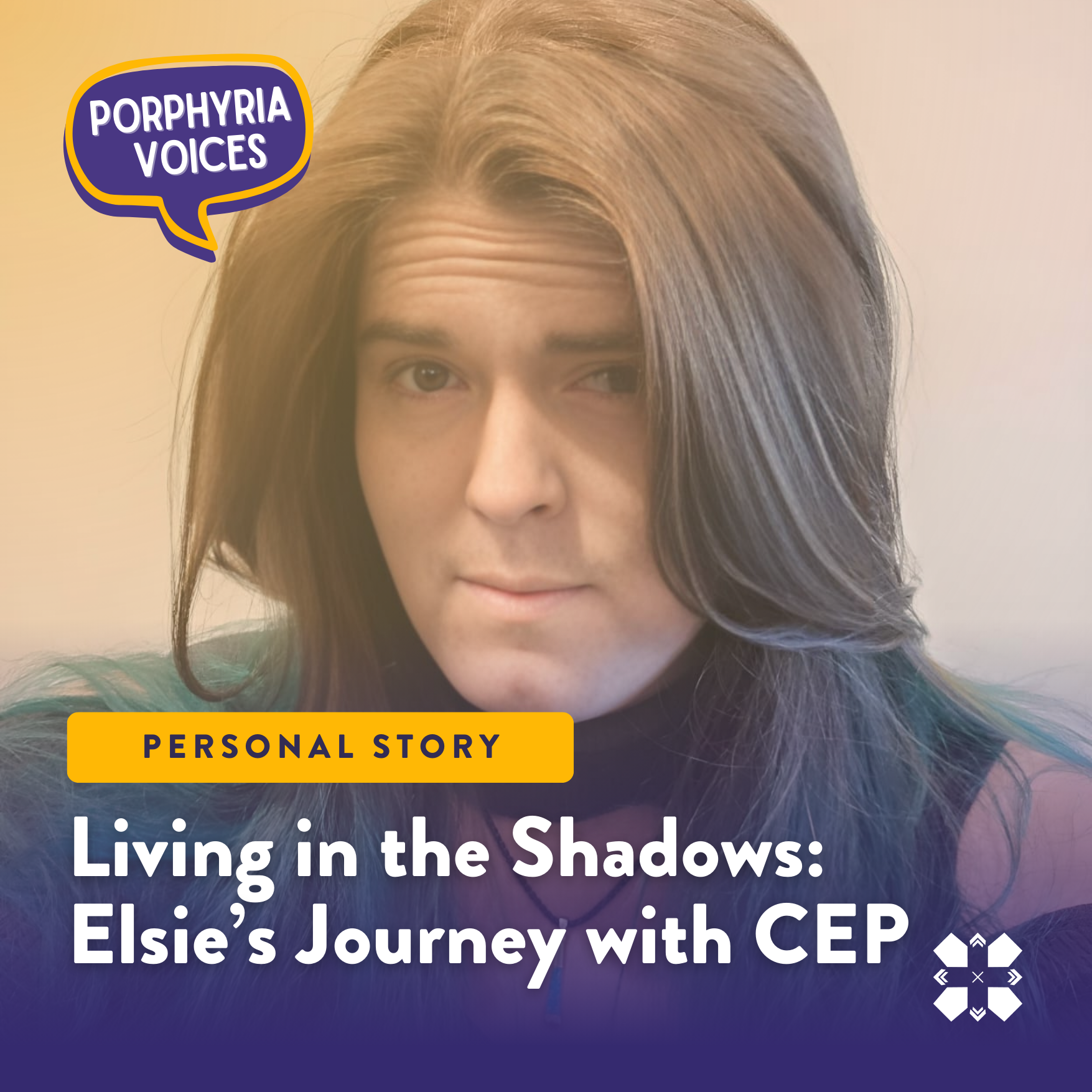
CEP
Congenital Erythropoietic Porphyria
Congenital Erythropoietic Porphyria (CEP)
CEP, also known as Gunther disease, is a very rare form of porphyria. The major symptoms are sensitivity of the skin to sunlight and some types of artificial light, and anemia which can be very severe.
Sunlight exposure causes blistering. The fluid-filled blisters rupture and get infected. These infected wound can lead to scarring, bone loss, and deformities. The hands, arms, and face are the most commonly affected areas. Increased hair growth (hypertrichosis) on sun-exposed skin, brownish-colored teeth (erythrodontia), and reddish-colored urine are common. There may be bone fragility and vitamin deficiencies, especially vitamin D. The spleen can be enlarged, particularly in people with anemia.
The severity and onset of symptoms can vary. For many, the onset of symptoms and diagnosis are often in infancy. Some do not develop symptoms until adulthood, their symptoms are usually milder and primarily skin related.
CEP is very rare and caused by changes in the URO gene which results in low levels of the UROS enzyme in the heme pathway. The low levels of the UROS enzymes in the bone marrow, where red blood cells are made, results in the accumulation of porphyrins in the body because there isn’t enough UROS enzymes to process them.
Porphyrins accumulate, particularly in the skin, bone marrow, teeth, and bones. Exposure to sunlight and some forms of artificial light activates the accumulated porphyrins in the skin and causes in severe blistering.
Blistering on light-exposed parts of the body, most commonly the hands, arms and face
Fluid-filled blisters can rupture and become infected, leading to scarring, bone loss and deformities
Increased hair growth on sun-exposed skin
Brownish-colored teeth (erythrodontia)
Reddish-colored urine
Bone fragility and vitamin deficiencies, especially vitamin D
Enlarged spleen
CEP is diagnosed using biochemical testing, starting with testing plasma and urine for elevated porphyrins. Additional testing is required to rule out other reasons that porphyrins may be high (ex. lead exposure) and other types of porphyria.
For more information on testing visit the Seeking a Diagnosis page.
Anemia
In people with severe anemia, repeated red blood cell transfusion are needed. In severely affected people who are dependent on blood transfusions, a bone marrow transplant may be needed. People who have successful bone marrow transplants no longer have sun-sensitivity.
Potential Treatments under Development
Medications to treat CEP are currently being researched, and a clinical trial is expected to begin recruiting in the upcoming year. Join our mailing list or contact us directly at info@porphyria.org to receive information on clinical trial opportunities.
People with CEP should see a porphyria specialist at least once a year for regular follow-up. People who have severe anemia may need to see a specialist more regularly.
Light Avoidance
Avoiding exposure to sunlight is the most important way to manage symptoms for people with CEP. People with CEP need to wear protective clothing, and have windows tinted in their cars and homes. Most sunscreens are not effective because they do not block light in the blue-violet range, which is the type of light that triggers reactions in porphyria.
Blister/Wound Care
There is a high risk of developing infections in blisters, particularly if they rupture. Prescription antibiotic ointments may be required to manage infections. Care from a dermatologist is recommended.
Photomutilation can result in the loss of facial features (nose, ear and lids) and digits. Hypertrichosis on sunexposed skin, reddish-brown colored teeth (erythrodontia), and reddish-colored urine are common features. There may be bone fragility due to expansion of the bone marrow and vitamin D deficiency. In severe causes, erythrocytes have a shortened life-span, and mild or severe hemolytic anemia results, along with increased erythroid synthesis and splenomegaly.
CEP is inherited as an autosomal recessive genetic disorder. Recessive disorders occur when an individual inherits two copies of an abnormal gene for the same trait or disease, one from each parent. Typically, there is no family history of the disease (except possibly in siblings), and neither parent has symptoms, but each carries a changed gene that they can pass to their children. The risk for two carrier parents to both pass the changed gene and have an affected child is 25% with each pregnancy. If an individual receives one normal gene and one changed gene, the person will be a carrier for the disease, and will not have any symptoms.
More CEP Resources
Check out our Spotlight Porphyria blog for answers to common (and uncommon) CEP questions, updates on the latest research and more!

Get Connected
-

Get your questions answered
Our Patient Navigator can help you find porphyria specialist, access testing and treatments, and get your porphyria questions answered.
-

Find others who know what it's like
Connect regularly with small group of your peers! Groups are created around diagnosis and particular experiences/needs.
-

Talk one-on-one
Connect with a UPA Ambassador who understands what you're going through, because they've been there too.




